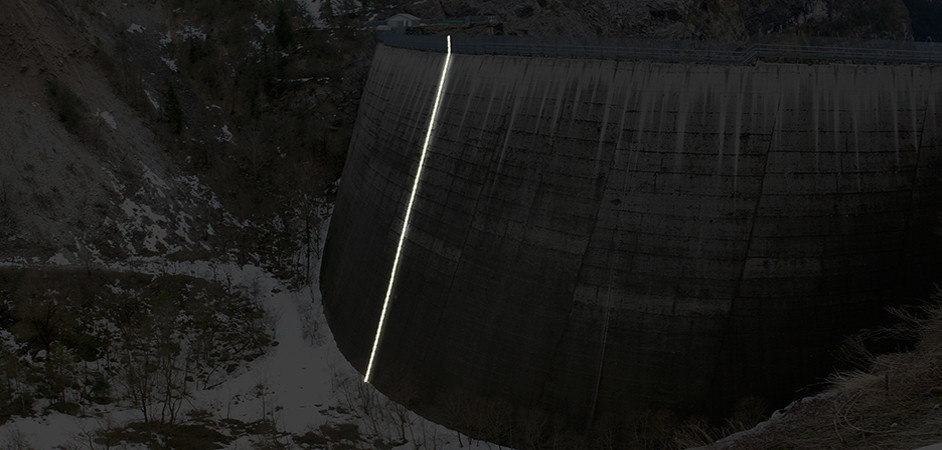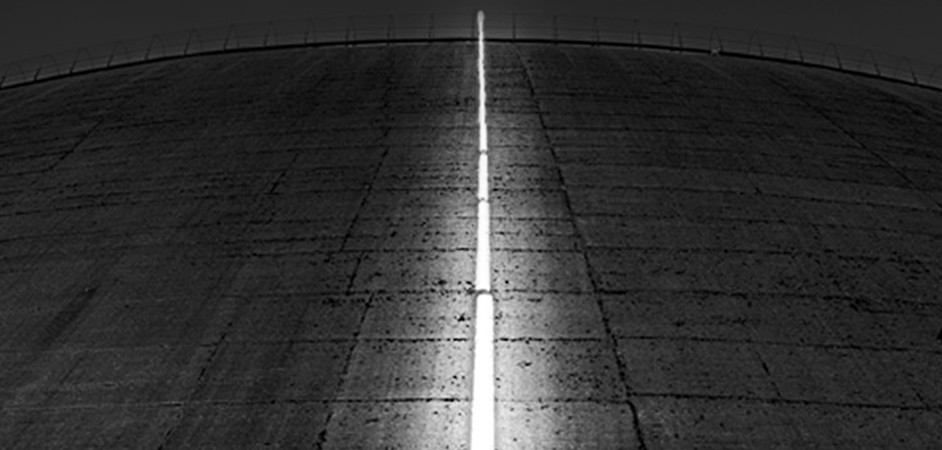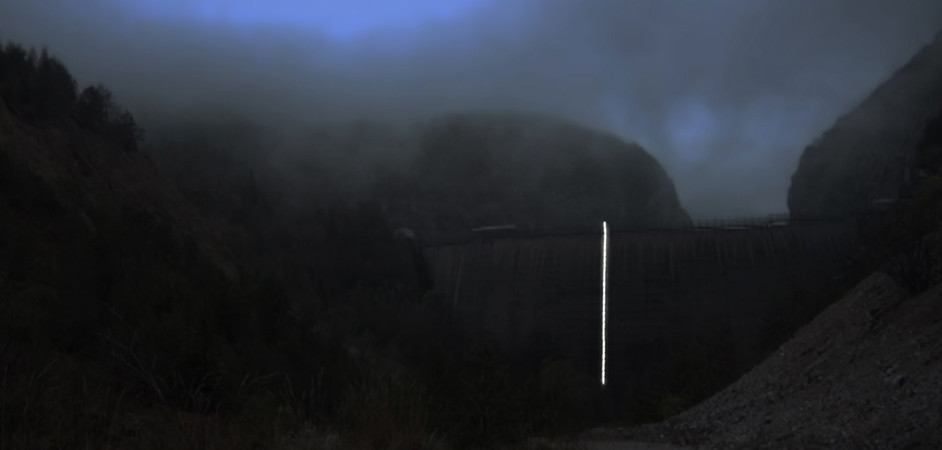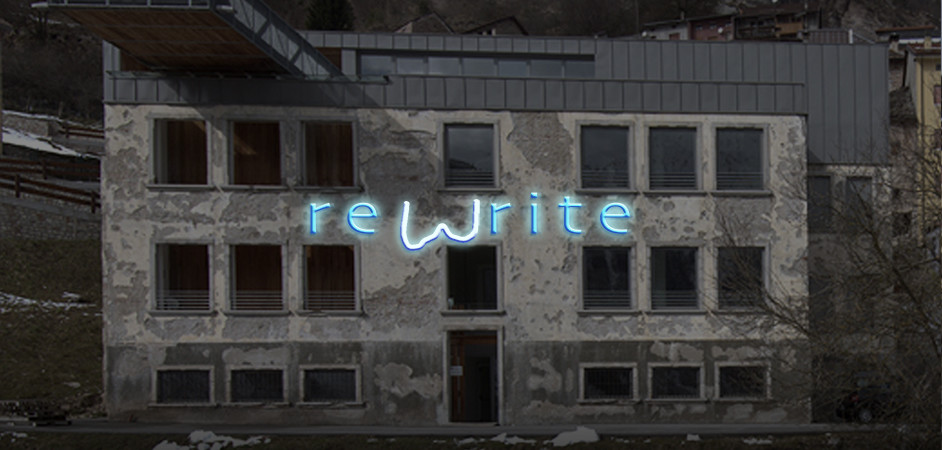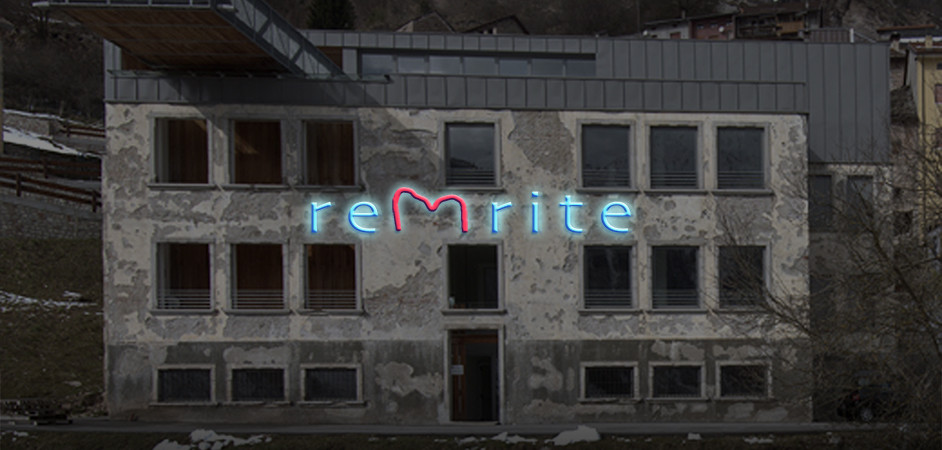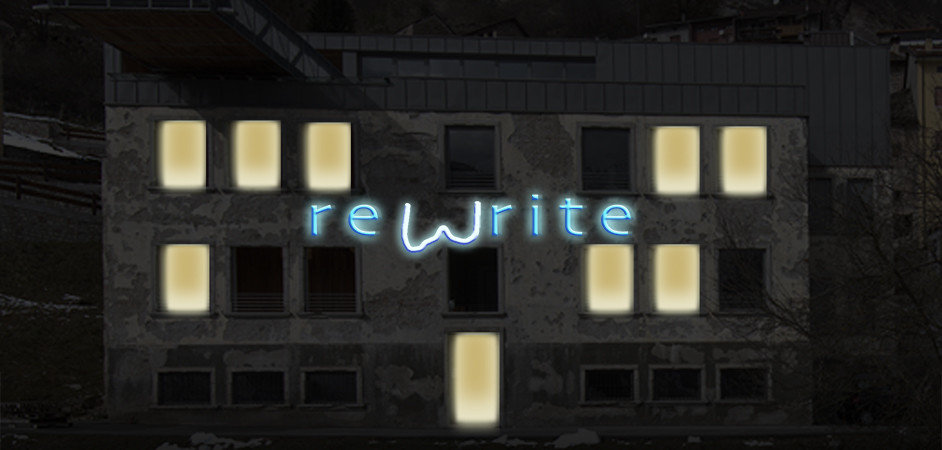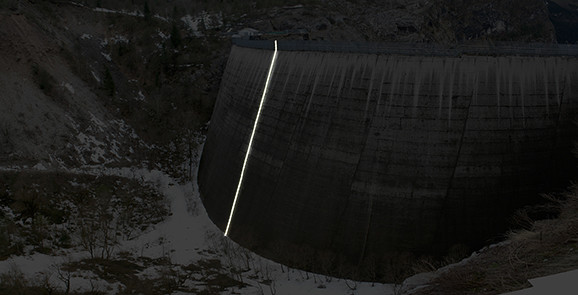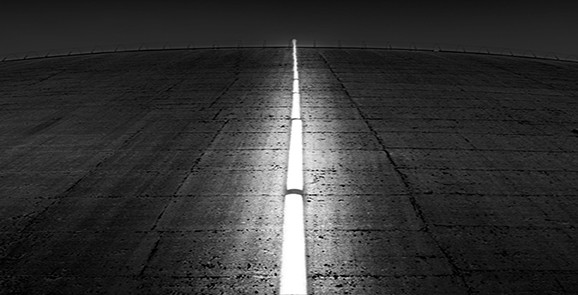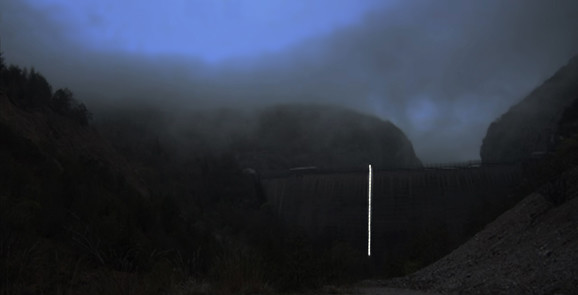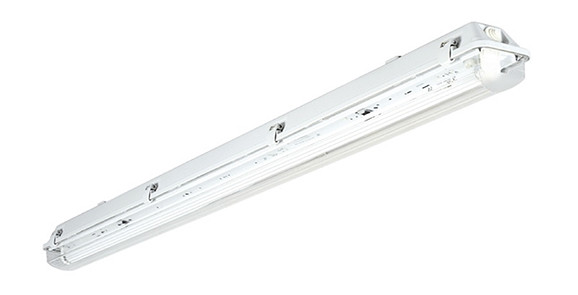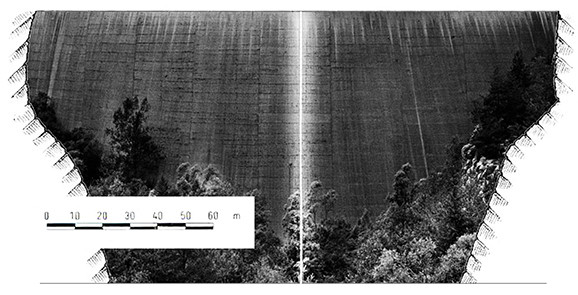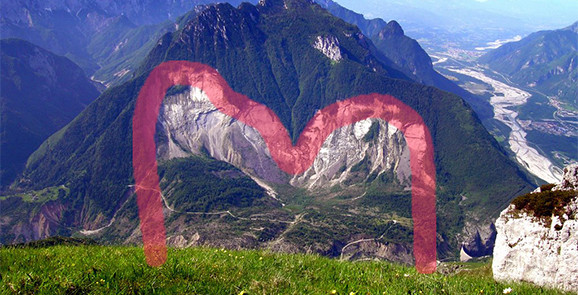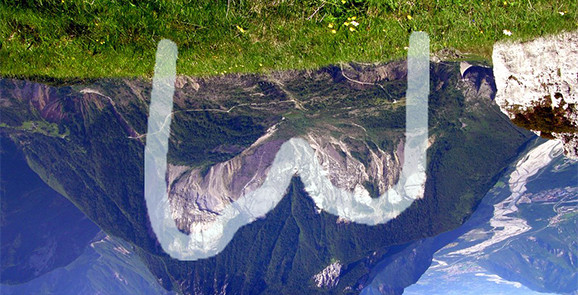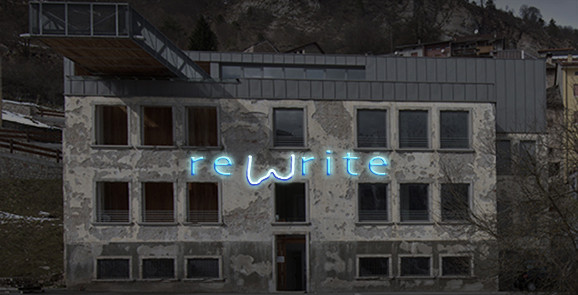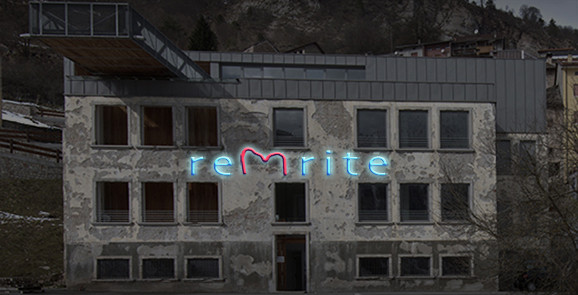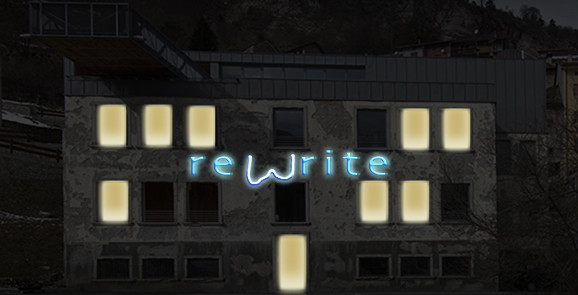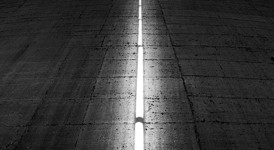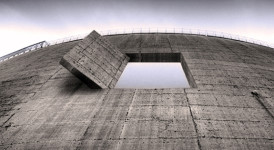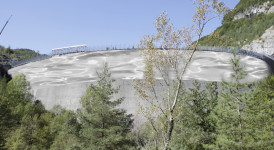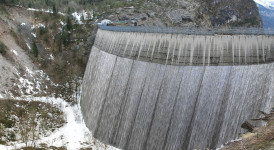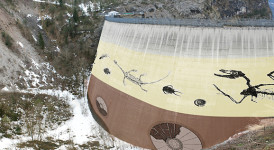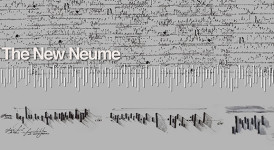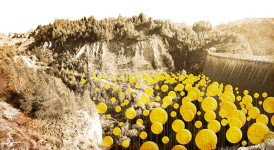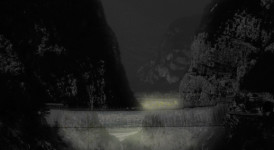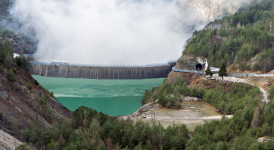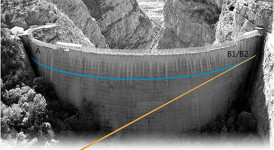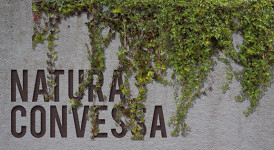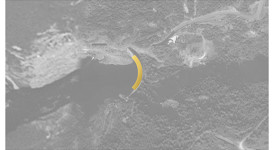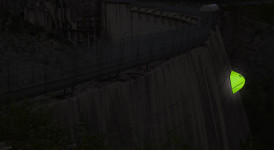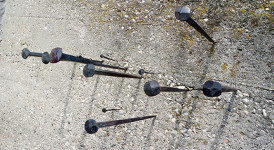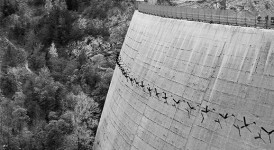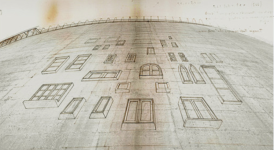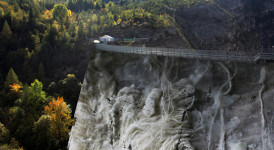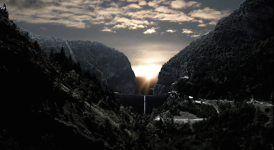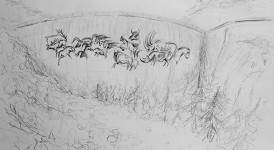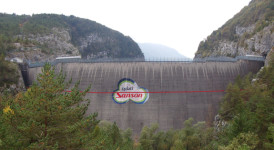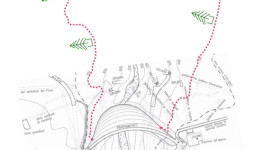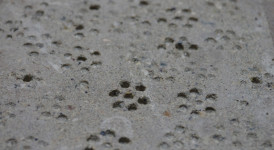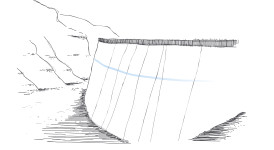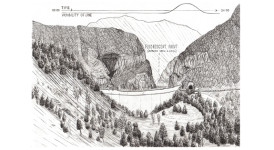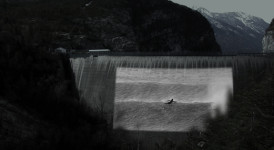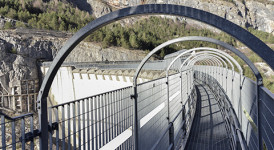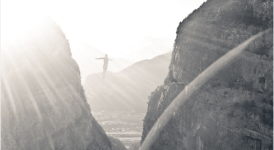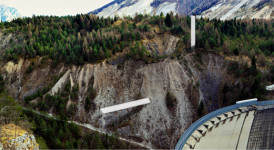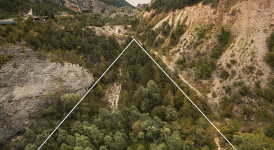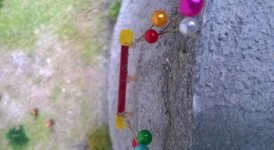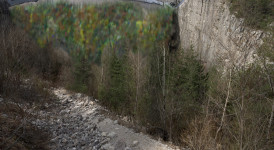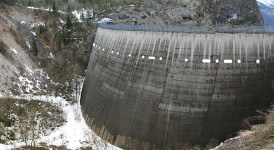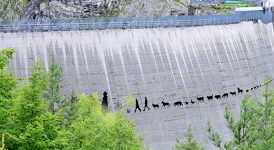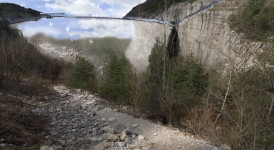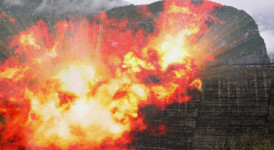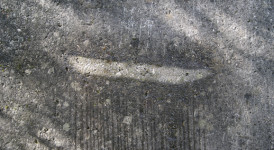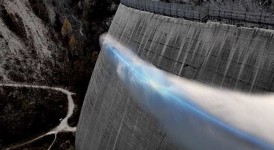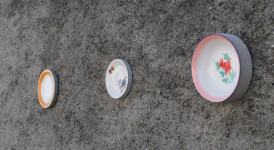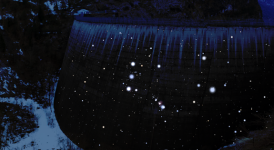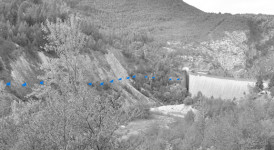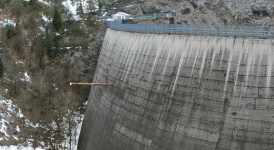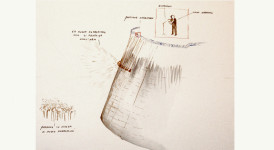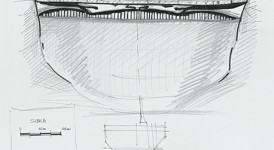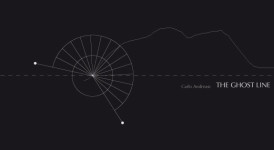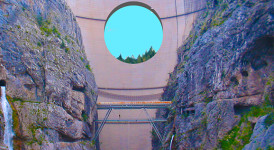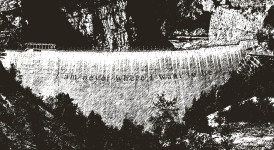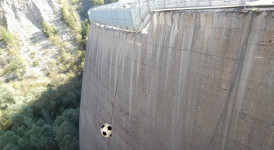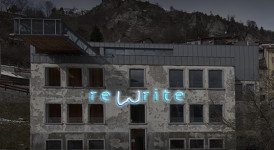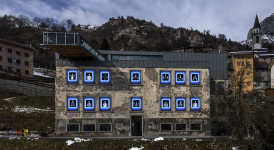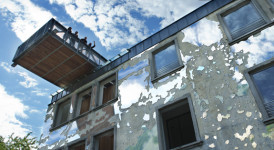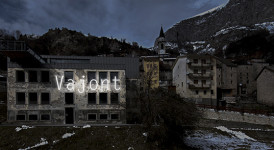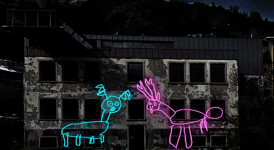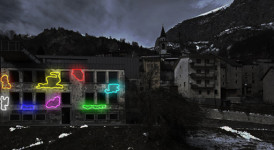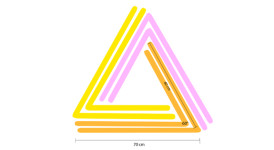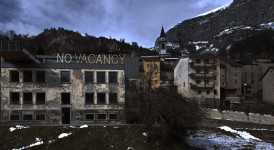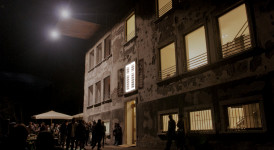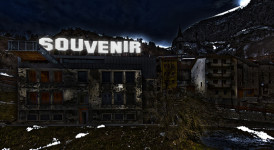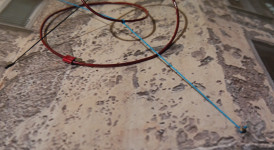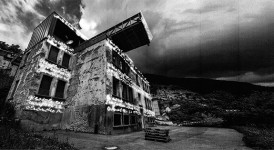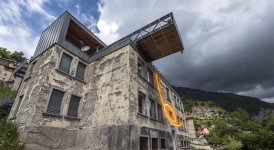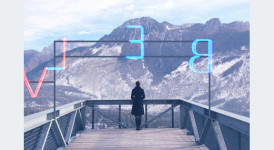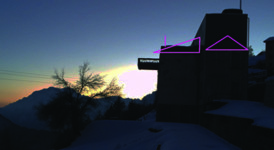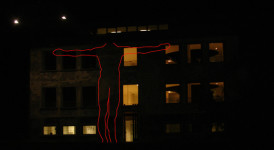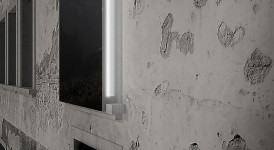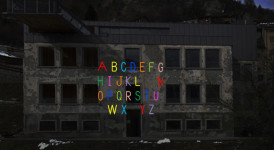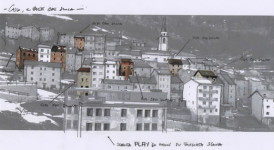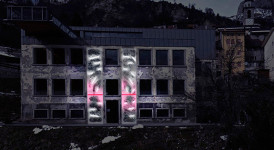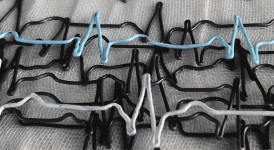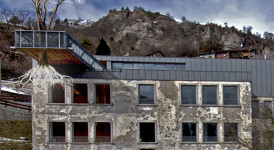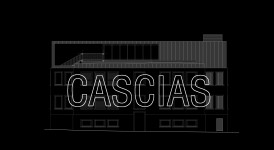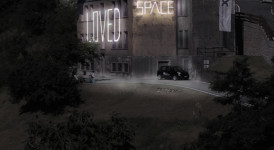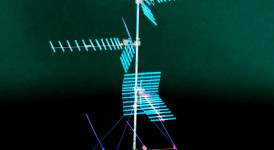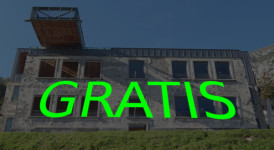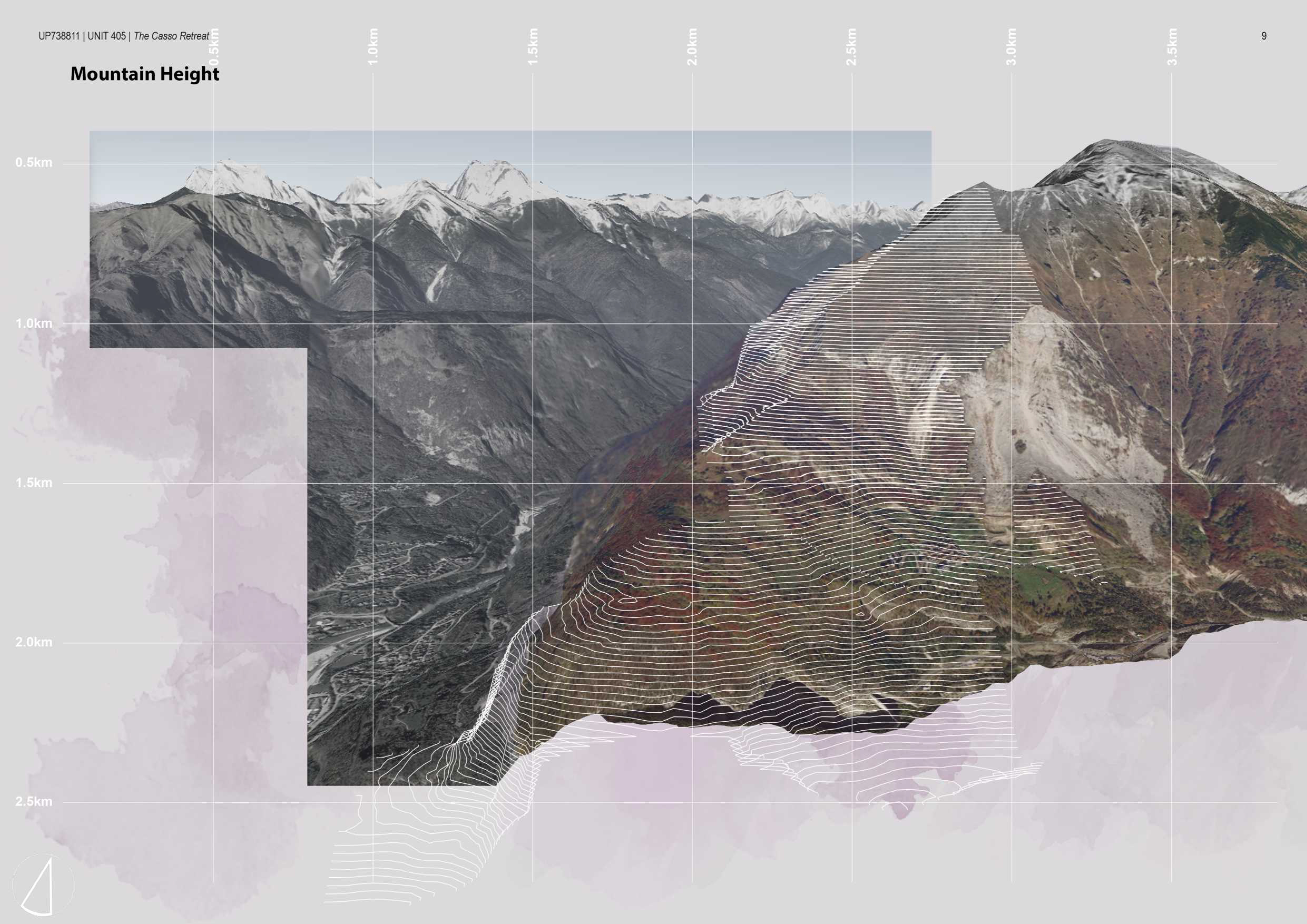Two Calls for Vajont: i vincitori / Two Calls for Vajont: winners
Andrea Nacciarriti – 90°cw
Dimitri Giannina – REMRITE/REWRITE
___________________________________________________________________________________________________________________
Vincitore di a call for a line
La diga del Vajont è un elemento estraneo al paesaggio naturale in cui è inglobata, la sua presenza è traumatica e invadente. Nella percezione dei sopravvissuti alla tragedia del 1963, la diga rappresenta la ferita mai sanata con il luogo, con il paesaggio, con l’uomo e il suo spirito di sopravvivenza.
Il paesaggio, soprattutto dopo il disastro, ha modificato il suo naturale andamento, serrato dalla percezione del limite orizzontale invalicabile. La sua presenza impone un limite nella percezione, che è anche limite alla memoria, la quale è bloccata in un fermo immagine. Il confine tra terra e cielo è paradossalmente nascosto e occultato dal confine visivo della diga.
Il progetto ruota l’orizzonte sulla superficie della diga, la linea si stende verticalmente sul muro di cemento per tutta la sua lunghezza, una sequenza di plafoniere singole a LED stagne da 150 cm. La linea si illumina con il crepuscolare, rendendola profondamente visibile dal tramonto all’all’alba, quando la diga si oscura.
Il paesaggio segnato ridefinisce il suo movimento naturale, tracciando una spaccatura ideale sulla valle, un ribaltamento sulla percezione e sulla memoria, aspetti che hanno a che fare con i processo cognitivo dell’uomo nella rielaborazione di un qualsiasi evento.
Jerry A. Fodor, filosofo del linguaggio e scienziato cognitivo definisce in “the modularity of mind”, la struttura mentale come architettura funzionale, caratterizzabile in due differenti funzionamenti: quello orizzontale che ambisce a legittimare la prassi mentalistica popolare e quello verticale che ci aiuta a cavarcela nel mondo sociale.
Materiali: 68 plafoniere singole a LED stagne da 150 cm.
Installazione: sarà necessario un ancoraggio sospeso per l’installazione delle plafoniere con tasselli da muro.
_______________________________________________________________________________
[ENG] The Vajont Dam is a foreign element to the natural landscape in which it is swallowed, its presence is traumatic and intrusive. In the perception of those that survived to the tragedy in 1963, the dam represents the scar that never completely healed with the place, with the landscape, with the man and his survival instinct.
Especially after the disaster, the landscape has changed its natural development, it’s tight by the perceived of the unassailable horizontal limitation. Its presence imposes a limit in the perception, which is also a limit to the memory like a freeze-frame, blocked memory. The boundary between earth and sky is paradoxically hidden and concealing from the visual boundary of the dam.
In the project the horizon is rotated on the surface of the dam, the line stretched vertically along the length of the cement wall, a sequence of single weatherproof fluorescent fittings 5 ft. long. The line lights up at nightfall, making it extremely visible from sunset to down, when the dam grows dark.
The marked landscape redefines its natural motion, it tracks an ideal rift on the valley, it is an overturning on the perception and on the memory, issues relating to the human cognitive processing about the reworking of any event.
Jerry A. Fodor, philosopher of the language and cognitive scientist, defines the structure of the mind as functional architecture, he assumes two different workings: on one side the horizontal faculties whose ambition to legitimise the popular mentalist practice and on the other side the vertical faculties that help us to manage in the social world.
Materials: 68 single weatherproof fluorescent fittings 5 ft.
Installation: it twill be necessary a suspended anchoring for installing the light fittings with wall plugs.
Dimitri Giannina – Remrite/rewrite
Vincitore di a call for a wall
ReMrite è un nonsense, è l’errore ortografico e lo sbaglio di un alunno, dovuto alla disattenzione, all’ ignoranza, alla svogliatezza o magari solo alla fantasia di poter giocare con le lettere.
ReMrite è la M di quella frattura che dalle finestre delle scuole elementari si vede sul monte nel versante opposto ed è la W capovolta di “abbasso la scuola”.
ReMrite è la scritta che comparirà sulla facciata del nuovo spazio DC nei momenti antecedenti alle mostre/convegni, in quel tempo semplicemente interposto tra l’inutilizzo e l’utilizzo di questo spazio.
ReWrite è invece la parola che comparirà ogni volta che questo spazio riprenderà vita, è la correzione di uno sbaglio, è REWRITE, ossia riscrivere questo luogo con parole nuove, è la M di una tragedia o situazione che può venire ribaltata e “rivolta” verso nuove intenzioni, verso un nuovo cambiamento, è “W la scuola” ed il suo riutilizzo rivolto a tutti.
L’idea di questo progetto è semplicemente di capovolgere la M, forma, incisione, frattura che rappresenta la tragedia del Vajont e quindi di ribaltare l’atteggiamento ed il modo di vivere questa tremenda catastrofe, come quando da bambini frequentando la scuola con un semplice gesto si poteva trasformare M la scuola in W la scuola.
_______________________________________________________________________________
[ENG] The word “ReMrite” is a nonsense, is the misspelling, the blunder of the pupil, something due to carelessness, ignorance, listlessness or simply to the fantasy of playing with letters.
“ReMrite” is the M-shaped fracture of the mountain on the opposite side of the valley and the inverted W of “down with the school”.
“ReMrite” is the word that will appear on the facade of the new space DC before the exhibitions and conferences, in the time frame interposed between the non-use and the use of this space.
“ReWrite”, instead, is the word that will appear every time that this space will resume life, it is the correction of a mistake, is a REWRITE, or rewrite this place with new words, is the “M” of a tragedy or a situation that can be overturned and addressed to new intentions, to a new change, is a “W (hooray) for school” and its reuse open to everyone.
The idea of this project is simply to overturn the letter “M”, the shape, the engraving, the fracture that represents the Vajont Dam tragedy and, by doing this, to overturn the attitude and the way of deal with this terrible catastrophe, like when we were children attending school and with a simple gesture we could turn “M (down with) the school” into “W (hooray for) school”.
A fronte di quasi 180 proposte giunte da tutta Italia e dall’estero, 75 furono i progetti finalisti selezionati (48 per a call for a line; 27 per a call for a wall).
Anche a finalisti e nominati abbiamo voluto riservare uno spazio.
Scopri i finalisti e i nominati di a call for a line
Scopri i finalisti e i nominati di a call for a wall

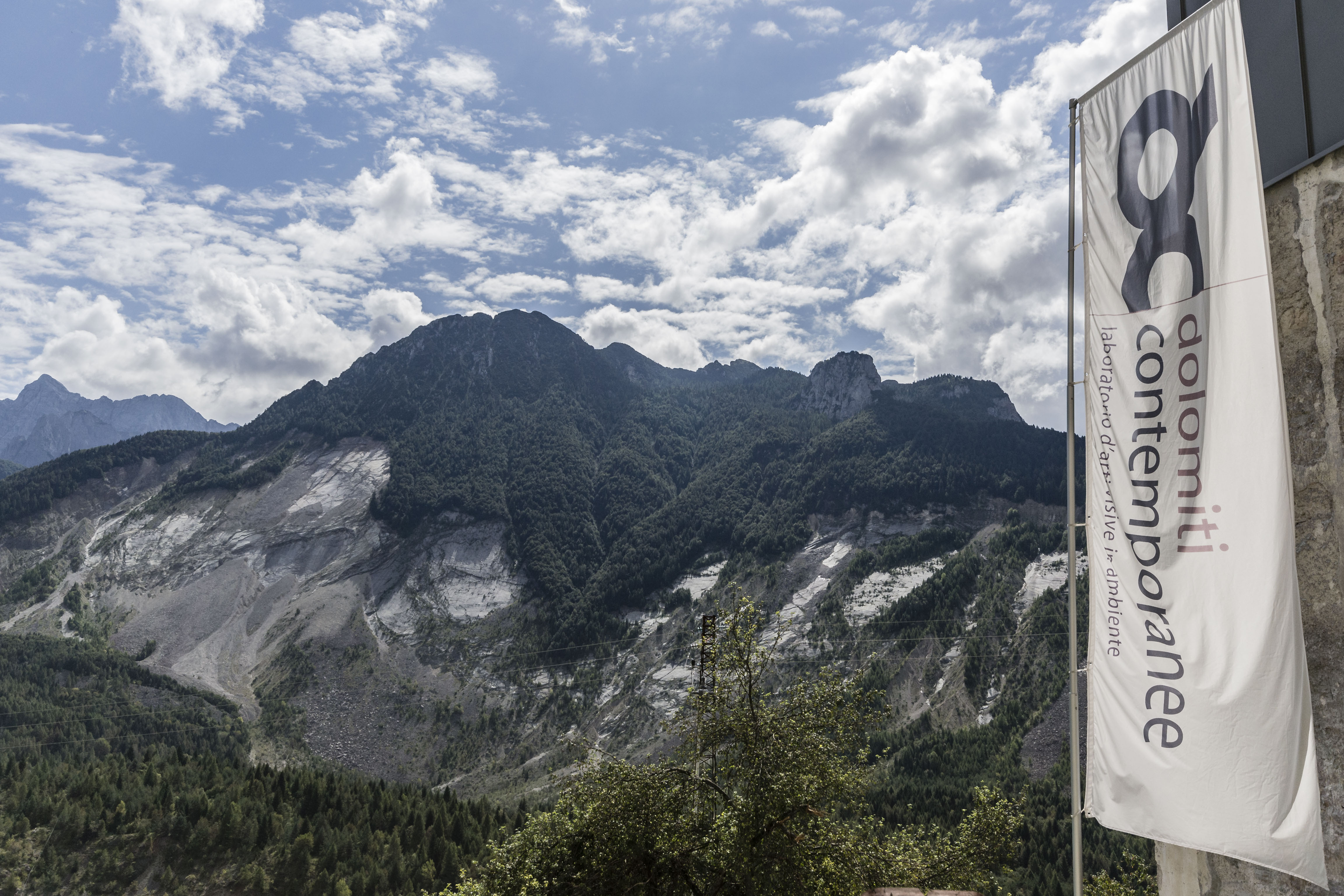
Tuesday, June 15th 2021, 2 – 4 PM, webinar panel:
two calls for vajont: fase _restart.
Vajont: [...]

